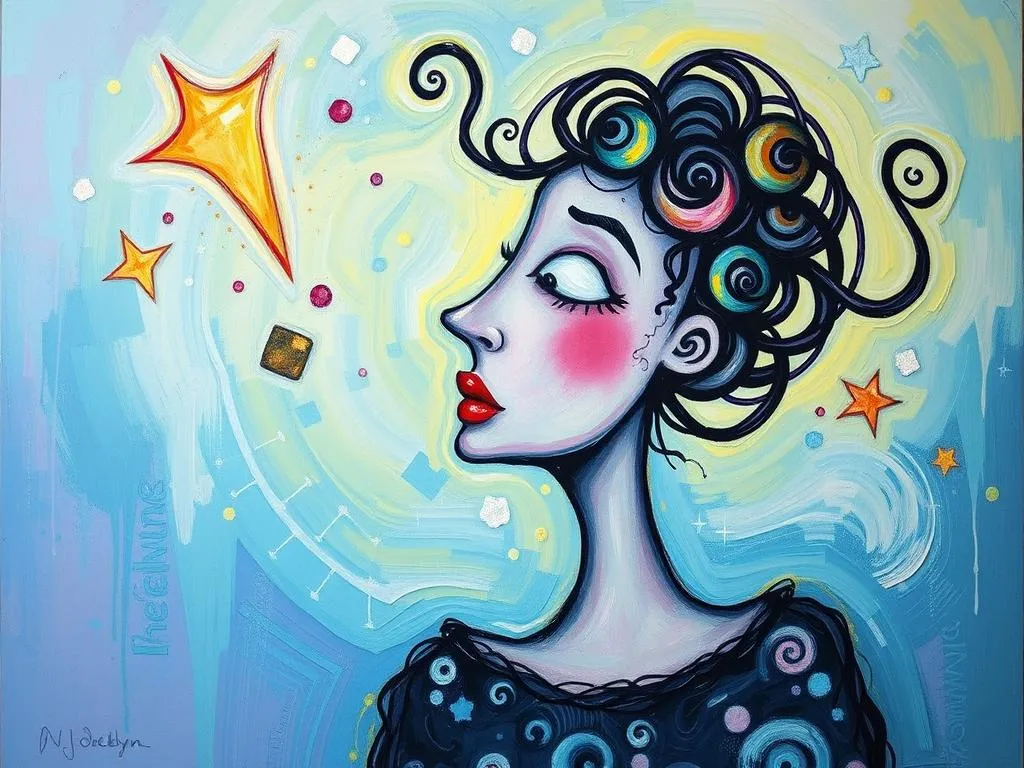
Have you ever found yourself waking up from a dream, heart racing, and wondering what just happened? Dreams can feel so vivid and real, yet deciphering their meaning often seems like an impossible task. But what if I told you that your dreams are less random and more like a personal GPS, guiding you through the complexities of your waking life? Understanding the messages woven into your dreams can illuminate your subconscious, revealing desires, fears, and insights you may not even be aware of.
In this article, we’ll delve into the fascinating world of dream symbolism, explore personal experiences that resonate with these symbols, and uncover how these insights can foster your personal growth. Think of this journey as a conversation with a knowledgeable friend who is eager to share the wisdom found hidden within the realm of dreams.
The Language of Dreams: Decoding Symbols
Dreams are a rich tapestry of symbols, each one uniquely tailored to the dreamer’s experiences, emotions, and thoughts. Understanding these symbols can provide powerful insights into our waking lives. For instance, the presence of water often signifies emotions, the unconscious mind, or a need for purification. In contrast, flying can represent freedom, aspirations, or a desire to escape from the pressures of life.
Let’s explore some common dream symbols and their possible meanings:
-
Falling: This symbol often reflects a feeling of loss of control or insecurity in one’s life. It may indicate that you are facing challenges that make you feel vulnerable and uncertain about your future.
-
Teeth: Dreaming about teeth falling out can signify anxiety about appearance, aging, or a fear of losing power. It may also reflect concerns about communication and how you express yourself to others.
-
Chase: Being chased in a dream can represent avoidance. It often points to an issue or emotion you are trying to escape from in your waking life, urging you to confront what you fear rather than run away.
-
Doors: Doors symbolize opportunities or transitions. Dreaming of opening a door can indicate new beginnings, while a closed door may suggest missed opportunities or feelings of being stuck.
-
Animals: Animals in dreams can symbolize our instincts, desires, or fears. A lion might represent courage and strength, while a snake may invoke feelings of treachery or transformation.
Each of these symbols carries significant weight and can vary in meaning based on personal experiences and cultural context. Cultural perspectives play a crucial role in dream interpretation. For instance, in some Indigenous cultures, dreams are considered a vital pathway to understanding the self and the spirit world, while in Western psychology, they are often analyzed as reflections of the subconscious mind.
Dreamscapes: Personal Experiences and Scenarios
Understanding dream symbolism is one thing, but how do these symbols manifest in our dreams? Let’s explore some relatable scenarios that illustrate how these symbols come to life in the dream world.
1. The Office Dilemma
Imagine dreaming of being in an office, but your desk is cluttered with papers, and you can’t find the file you need for an important meeting. This could symbolize feelings of overwhelm or stress in your waking life. The chaotic desk reflects the mental clutter you may be experiencing as deadlines loom or responsibilities pile up. Your subconscious is urging you to seek organization and clarity.
2. The Endless Staircase
You find yourself climbing an endless staircase, each step feeling heavier than the last, and just when you think you’ve reached the top, another flight appears. This dream can signify a sense of struggle in your personal or professional life. It may represent the exhausting pursuit of your goals and how you feel like progress is elusive. Perhaps it’s time to reassess your ambitions and consider whether you’re on the right path.
3. The Abandoned House
Dreaming of wandering through an old, abandoned house evokes feelings of nostalgia and fear. Each room you enter is filled with memories but also dust and decay. This dream often symbolizes past experiences or forgotten aspects of yourself that need attention. It might be a call to confront unresolved issues or to rediscover parts of your identity that have been neglected.
4. The Lost Child
In a dream, you lose sight of a child you’re responsible for, and panic sets in. This scenario speaks to feelings of anxiety about responsibility or control. The child may represent a project, relationship, or aspect of your life you feel you are not nurturing adequately. It’s a gentle reminder from your subconscious to check in on what truly matters to you.
5. The Waterfall
You stand at the edge of a breathtaking waterfall, mesmerized yet terrified. This dream symbolizes a significant life change or emotional release. Waterfalls often represent the flow of emotions, and standing before one signifies a moment of reflection before diving into the unknown. It encourages you to embrace change rather than resist it.
The Path to Transformation: Personal Growth Through Dreams
Now that we’ve explored dream symbols and relatable experiences, how can we take action toward personal growth based on these insights? Dreams serve as a guide, illuminating paths you may not have considered. Here are some practical steps to harness the power of your dreams:
1. Keep a Dream Journal
Start recording your dreams as soon as you wake up. Write down key symbols, emotions, and events. This practice enhances your dream recall and allows you to recognize patterns over time. Review your entries regularly to see how your dreams evolve and what messages emerge.
2. Reflect on Your Emotions
Take a moment to ponder the emotions felt during your dream. Emotional awareness is critical for personal growth. Ask yourself what feelings the dream evokes and how they relate to your waking life. This reflection can lead to deeper self-understanding and clarity.
3. Engage in Active Imagination
If a particular dream resonates with you, try to engage with it actively. Visualize the scenario in your mind and explore the feelings and choices of the characters involved. This technique, often used in Jungian psychology, can help you integrate the dream’s insights into your conscious life.
4. Seek Meaning in Symbols
When you encounter a recurring dream symbol, take time to research its meanings. How does it apply to your life? Consider both personal and cultural interpretations. Often, symbols reveal truths that resonate deeply, guiding you toward positive changes.
5. Cultivate Mindfulness
Practicing mindfulness can help you become more attuned to your thoughts and feelings, allowing you to recognize when life’s challenges mirror your dreams. Mindfulness encourages you to stay present, making it easier to confront the issues your dreams are highlighting.
6. Embrace Change
Finally, don’t shy away from change. Dreams often reflect transitions and the need for growth. Acknowledge that discomfort can be a sign of progress. Embrace the unknown, just like standing at the edge of a waterfall, and allow it to propel you forward.
As you navigate the intricacies of your dreams, remember that they are not just fleeting images but powerful reflections of your inner world. By understanding their symbolism, reflecting on personal scenarios, and applying practical insights, you open the door to profound personal growth.
Ultimately, the journey through your dreams is a journey through yourself. Each dream offers a whisper from your subconscious, inviting you to listen, learn, and transform. So, as you drift off to sleep tonight, keep in mind that your dreams are waiting, full of hidden clues just for you. Embrace them, unravel their mysteries, and watch as they guide you toward a brighter, more authentic version of yourself.







